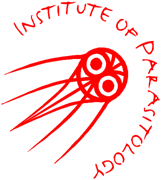Investigating the biology of drug resistance involves the following steps:
- Identify genes involved in conferring resistance.
- Characterize resistant and susceptible forms of these genes.
- Identify specific changes responsible for resistance.
- Estimate the effect of each change on survival of the drug.
The first and last of these are being addressed using population genetics (see above). The second and third involve the biochemistry of the parasite nervous system.
Ivermectin affects the nervous system of nematodes by activating chloride channels which inhibit an action potential from being induced in muscle cells. These channels are composed, typically, of five subunits that make up a heteromeric channel. Two different channel subunits have been found associated with resistance to ivermectin: a glutamate-gated chloride channel subunit (HcGluCla) and a GABA-gated chloride channel subunit (HG1). Normally these channel subunits bind reversibly either glutamate, or GABA, which activates the channel. Ivermectin binds irreversibly, causing complete relaxation of the muscle and flaccid paralysis.
The sequences of alleles favoured by drug selection have been compared to alleles that are not favoured to reveal changes in the amino acid sequence. Mutations specific for the resistant form have been identified and we are characterizing the biochemical and functional differences caused by these mutations. One advantage of this kind of approach is that natural alleles collected from the field generally contain subtle mutations that alter, but do not destroy the activity of the channel. Experiments in Caenorhabditis elegans use mutagens and selection screen that identify null mutations. By combining the two approaches we can transfect the wild parasite alleles into null mutant C. elegans and characterize in great detail the functional aspects of these important nerve system proteins.
